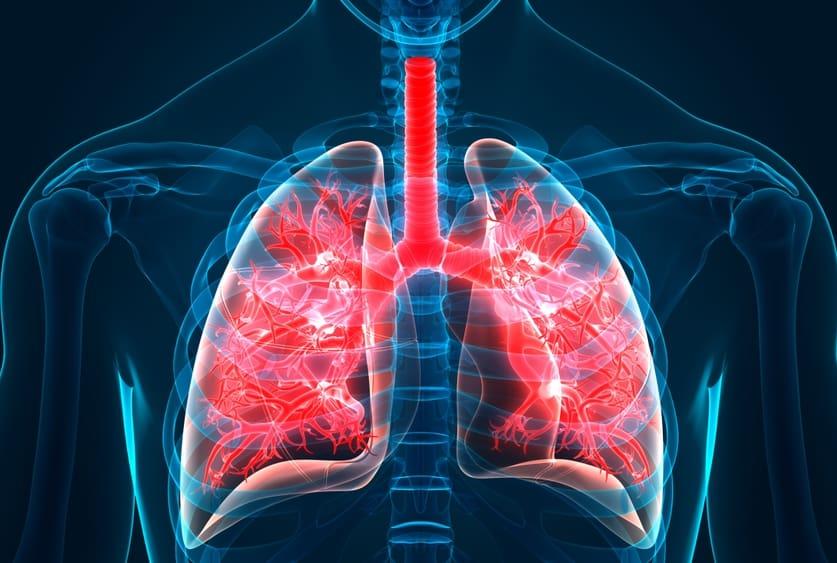Idiopathic pulmonary fibrosis (IPF) is a chronic, progressive form of pulmonary fibrosis that causes scarring or thickening of the lungs over time. The exact cause of IPF is unknown, hence it is called "idiopathic". IPF severely impacts the lives of thousands and is considered to be one of the most difficult-to-treat long diseases. In this article, we will explore IPF in detail—its causes, symptoms, diagnosis and the current treatment options.
What is Pulmonary Fibrosis?
Pulmonary fibrosis is a disease process where lung tissue becomes damaged and scarred. Over time, the lung tissue thickens and stiffens, making it harder for lungs to take in oxygen. Pulmonary fibrosis reduces the lungs’ elasticity and makes breathing difficult. In IPF, the lung tissues become thickened, stiff and scarred for unknown reasons. This scarring process is called fibrosisin lungs and it gradually worsens over months or years. IPF mainly affects adults over 50 years of age. Men are more commonly affected than women.
Causes of Idiopathic Pulmonary Fibrosis
The exact cause of IPF is unknown. However, some risk factors have been identified that may contribute to the development and progression of IPF:
- Smoking: Smoking history is associated with higher risk of developing IPF. It is estimated that smoking doubles the risk of IPF.
- Genetics: People with a family history of pulmonary fibrosis or lung disease have an increased risk of IPF. Certain gene mutations have been linked to rare familial forms of pulmonary fibrosis.
- Environmental factors: Exposure to certain dusts, metalworking fluids, wood dust, farming and welding fumes appear to modestly increase the risk.
- Gastroesophageal reflux disease (GERD): Chronic acid reflux may occasionally play a role in IPF.
- Gender: IPF is more common in men than women.
- Age: It typically affects people over 60 years. The risk increases with age.
Symptoms of IPF
In the early stages, IPF may cause no symptoms. As the disease progresses, common symptoms include:
- Breathlessness or dyspnea: Especially during physical exertion which can occur even during light activity like walking.
- Dry cough: A non-productive cough is very common.
- Tiredness and lack of energy: Fatigue is a major complaint due to the lungs not functioning properly.
- Finger clubbing: Enlargement and rounding of the finger ends.
- Wheezing or crackles: On lung examination, the doctor may hear coarse crackling sounds over the lungs.
Diagnosis of IPF
The diagnosis of IPF requires eliminating other known causes of fibrosis through careful evaluation. Tests may include:
- High-resolution computed tomography (HRCT): Can distinguish between IPF and other lung diseases. It usually shows characteristic patterns of fibrosis.
- Lung biopsy: A surgical lung biopsy may be required in some cases to confirm UIP pattern, which is considered necessary for an IPF diagnosis.
- Pulmonary function tests: Can detect restrictive lung disease and measure lung volumes and oxygen levels.
- Bronchoscopy: Rules out other diagnosis like sarcoidosis, hypersensitivity pneumonitis.
- Exclusion of other causes through testing.
Treatment and Management of IPF
Currently there is no cure for IPF but treatments can help control symptoms and slow progression. The goals of treatment are: controlling symptoms, improving breathing, exercising and maintaining quality of life.
- Medications: Pirfenidone (Esbriet) and Nintedanib (Ofev) are anti-fibrotic drugs approved for IPF which may slow disease progression.
- Lung transplantation: For those with advanced disease, lung transplant offers the best chance of survival and quality of life. However, transplantation is a major procedure with risks.
- Pulmonary rehabilitation: Helps improve quality of life through proper breathing exercises, pacing activities, nutrition counseling and stress management.
- Oxygen therapy: For those with low oxygen levels to help improve comfort.
- Treating complications early.
- Supportive care including vaccinations to prevent infections.
The overall five-year survival rate for IPF is approximately 20-40%, depending on the stage of disease at diagnosis. Prognosis largely depends upon how quickly symptoms and lung function decline initially after diagnosis. Survival is usually measured in years rather than decades post-diagnosis. However, newer treatments and lung transplantation have shown promise in slowing progression in some patients. Exercise and pulmonary rehab play an important role in disease management. Following medical guidance and promptly treating complications also help maximize quality of life. Overall IPF remains devastating without a cure, emphasizing the need for continued research for new therapies.
Explorer more information on this topic, Please visit @ https://www.trendingwebwire.com/idiopathic-pulmonary-fibrosis-ipf-demand-share-analysis/
Get more insights on this topic: https://captionssky.com/solar-panel-automatic-cleaning-robot-the-future-of-solar-energy-production/
